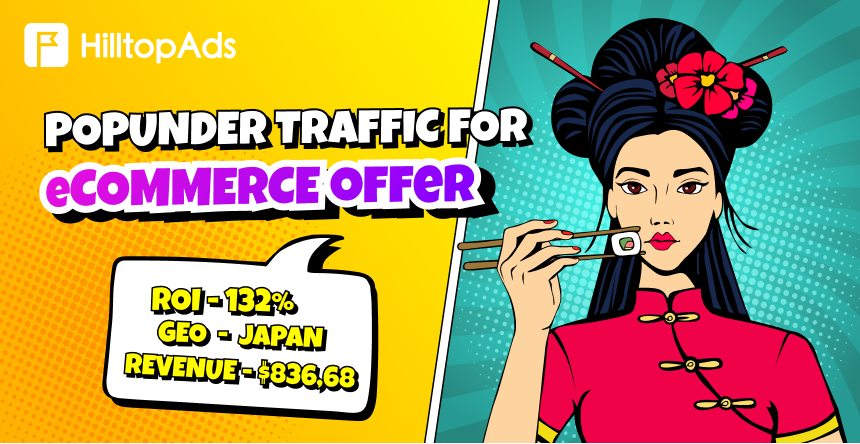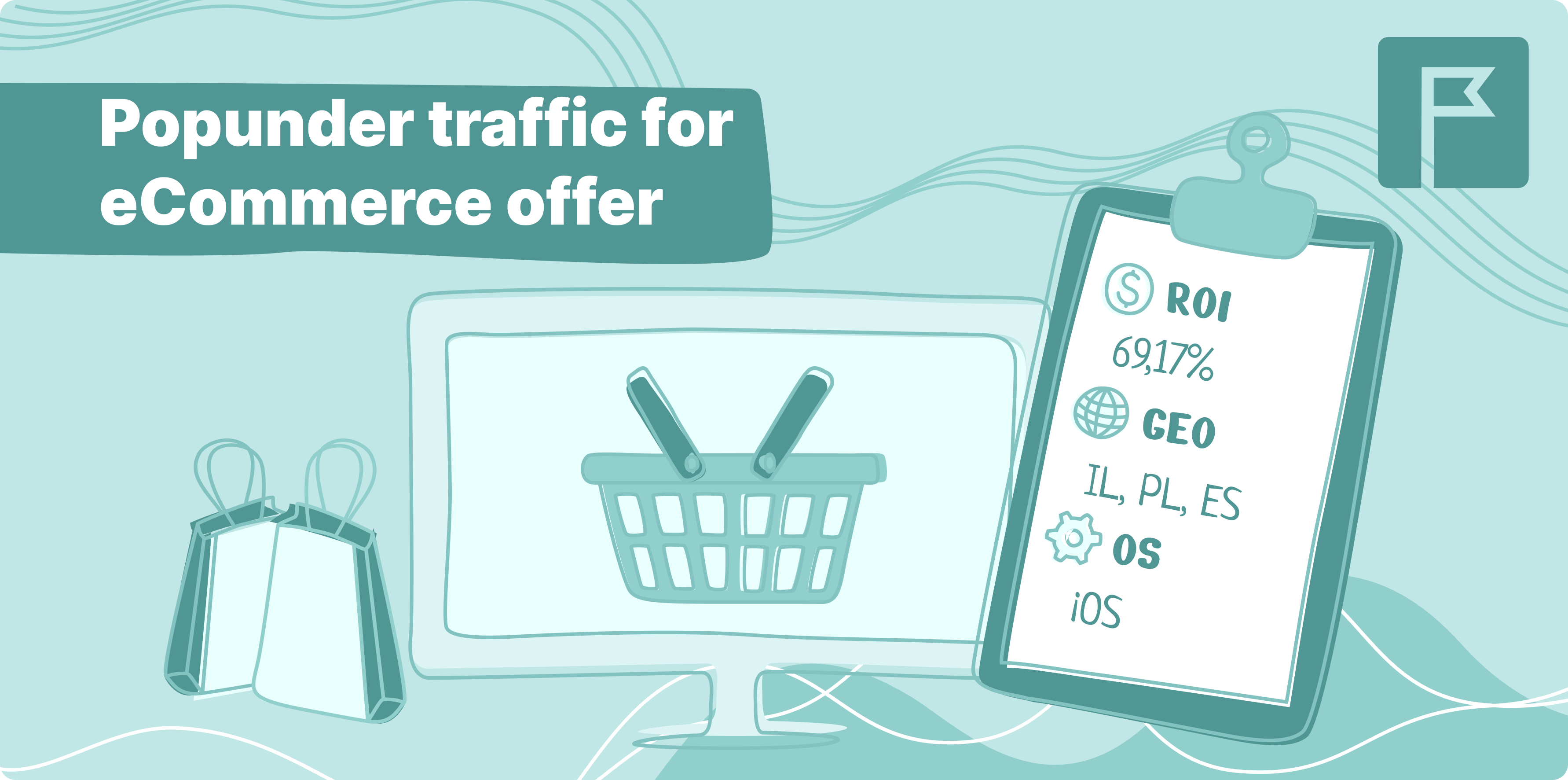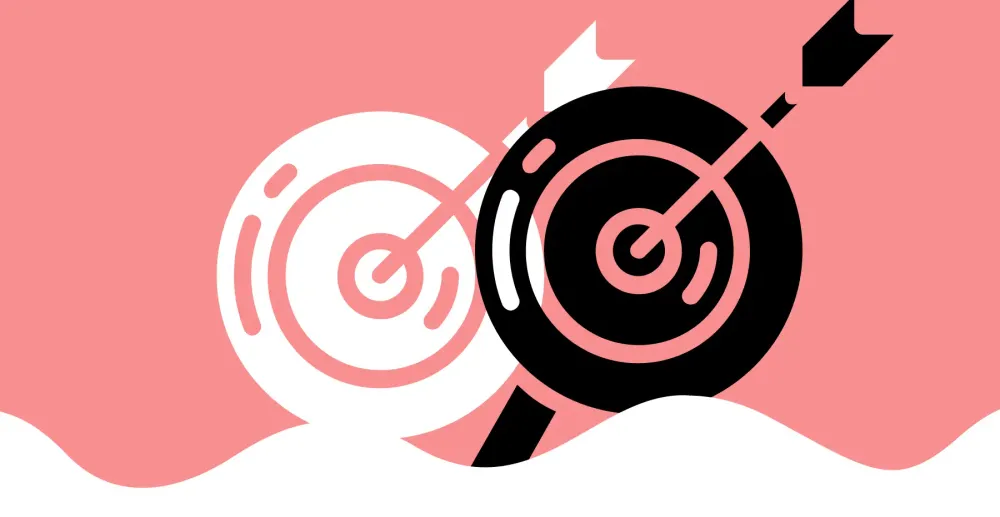For advertisers, the Japanese eCommerce market can feel like a locked fortress. This case proves that the right approach delivers real profits. We outlined steps for choosing the GEO, setting up campaigns, and adapting creatives for the local audience, resulting in a 132% ROI from popunder traffic on HilltopAds in just 14 days.

Start working with HilltopAds
and maybe in the next case we will tell you about your success story.
Key Points
Offer: Mainstream eCommerce
GEO: JP (Japan)
Traffic: Mainstream High and Medium Activity
Ad Format: Popunder mobile
OS: iOS, Android
OS version: iOS: 15, 16, 17, 18. Android: 10, 11, 12, 13, 14, 15
Ad campaign period: 20 September – 3 October
Revenue: $836,68
ROI: 132%
A bit about the vertical
In our previous blog posts, we’ve already explored the eCommerce vertical and shared insights on launching AliExpress offers in markets like Israel (IL), Poland (PL), and Spain (ES). For a detailed breakdown and more tips, check out the full article here:
When it comes to the eCommerce marketing in Japan, in 2024, Japan’s e-commerce market is expected to reach $259.2 billion, reflecting a steady growth rate of 7.76%. Japan ranks as the 4th largest eCommerce market in the world, trailing only behind the U.S., China, and the UK. The market is projected to continue expanding at a compound annual growth rate (CAGR) of 6.98% through 2028, with the total value estimated to reach $339.6 billion by that time. Key factors driving this growth include Japan’s high internet penetration, advanced payment systems, and the increasing adoption of e-commerce across various sectors such as retail shopping, travel, and food services.

As of March 2024, the frequency of online shopping in Japan shows a diverse range of consumer behaviors. According to the provided chart, the largest group of respondents (28.3%) make online purchases two to three times a month, while 22.8% shop once a month. About 17.6% of people shop online once every two to three months, and 13% do so once a week. Meanwhile, less frequent shopping habits include 6.6% of respondents purchasing once in half a year, and smaller portions (around 2-6%) either shop almost daily or only once a year or less.
This data illustrates how regular online shopping is for the majority of Japanese consumers, with most engaging in online shopping at least once a month.
About Rakuten
Rakuten is one of Japan’s largest eCommerce platforms, often referred to as the “Amazon of Japan”. Founded in 1997, Rakuten has grown into a global marketplace offering a wide range of products, from electronics to fashion. It operates not only as an online retailer but also provides services like travel bookings, banking, and digital content.
For affiliate marketers and traffic arbitrage professionals, Rakuten offers lucrative opportunities through its affiliate marketing program. By promoting Rakuten products and driving traffic to their marketplace, affiliates can earn commissions on sales. Given Rakuten’s strong brand presence and diverse product offerings, it provides ample earning potential for affiliates targeting Japanese consumers or those interested in global markets where Rakuten operates.

Strategy
Few media buyers venture into Japan, which explains the low competition in this geo, despite local interest in investing being just as high as in other Tier-1 countries.
The primary challenge that holds many back from targeting Japan and other Asian markets is the language barrier. All ad materials aimed at this geo must be in Japanese. Japan, while highly developed, ranks low in English proficiency due to the vast differences in grammar, syntax, and pronunciation between English and Japanese. Currently, only about 30% of Japanese people speak English, making English-language creatives ineffective in this market.
To overcome this, it’s recommended to hire native speakers on platforms like Fiverr or Upwork, or for smaller texts, use apps like HiNative to ask native speakers for help. Alternatively, you can also rely on AI tools like ChatGPT for assistance.
Ad format
We tested all ad formats offered by HilltopAds, including Popunder, In-Page, Banners, and Video VAST. The testing period varied for each campaign, typically lasting at least five days. Often, we had to stop campaigns that consumed too much budget without delivering satisfactory results.
From the start, we chose mobile traffic for our campaigns since it had previously performed well for eCommerce offers. After running all these test campaigns, we can confidently say that Popunder mobile ads delivered the best conversion rates for our offer. Therefore, we decided to proceed with this ad format for further testing.

Test your advertising campaigns with HilltopAds
and earn more!
Creatives
When it comes to creatives in Japan, the visual aspect is crucial. Bright colors and eye-catching headlines are a must. In addition, Japan has a strong culture of “cuteness” or “kawaii” and it’s not just an aesthetic choice—it’s a marketing strategy. Brands often create cute, sensitive characters to build an emotional connection with their audience, which contrasts with the bold, masculine themes in many Western ads.
Including fantasy elements in your creatives also works well, influenced by Japan’s love for anime and manga. If your offer can tie into a popular anime series, definitely incorporate that into your ad. When using images of people, Japanese models are preferred, though Western models can still be effective in some contexts.
The message
In eCommerce ads targeting Japan, leveraging the country’s culture of collective thinking can be a powerful strategy. Unlike Western cultures, where individualism often drives consumer choices, Japanese consumers tend to seek products that align with societal norms and enhance their group identity. To tap into this, highlight the product’s widespread use and popularity. Phrases like “everyone is buying” or “people are lining up” can significantly boost conversions.
Japanese consumers also value both tradition and innovation, a blend seen in many aspects of their culture, from fashion to technology. Effective campaigns should emphasize this balance, appealing to both modern and traditional values.
Finally, quality is of utmost importance in Japan. Consumers are willing to pay a premium for products that showcase meticulous craftsmanship and attention to detail. Highlighting quality and providing evidence to back up such claims is crucial to gaining their trust and driving success in this market.
Seasonality
When targeting Japan, it’s crucial to consider seasonality. While this may seem simple, Western marketers need to pay special attention to Japanese holidays or understand how international holidays are celebrated in Japan. For example, Christmas in the West is a family event, but in Japan, it’s more like Valentine’s Day, typically spent with a partner or friends at parties. New Year’s, on the other hand, is a family occasion, with visits to Shinto shrines. Therefore, eCom ads should align with these specific events to resonate better with the audience.
Summary
To succeed in the Japanese market, start by translating your landing page into Japanese and using the local currency, yen. A high-quality translation is essential, as 70% of Japanese people do not speak English. Additionally, adapt your creatives to align with the nuances of Japanese culture.
Page load speed is also critical—one-third of users will wait no longer than 2 seconds for a web page to load.
These adjustments can significantly impact your conversion rate and potentially boost your ROI by 50%. Based on testing, Popunder mobile ads were the most effective format for driving conversions in our campaigns.
General settings for an advertising campaign on the HilltopAds platform
Before launching an advertising campaign on HilltopAds, you need to register as an advertiser. You can register using this link.
Next, to create an advertising campaign, you need to:
- Go to the Manage Campaigns section
- Click the Add Campaign button
- In the campaign creation section, select the Popunder mobile ad format
- In the Traffic Channels section, choose Mainstream High and Medium Activity

Next, it’s essential to set up the Postback to track the results of your ad campaign. For a detailed description of working with Postback and the available placeholders, check out our guide.
In simple terms, for the final URL of the offer, we need to insert parameters to pass conversions and source IDs. The parameter for passing conversions is click_id, and the source ID is zone_id.
- {{ctoken}} – HilltopAds parameter for passing conversions.
- {{zoneid}} – HilltopAds parameter for passing source ID.
In general, you can add absolutely any parameter from the available options that is necessary for further campaign analysis. However, remember that it is essential to include the click_id parameter in the final link to pass conversions.
Next, we set the necessary targeting settings:
- GEO – JP (Japan)
- Device – mobile
- OS – iOS, Android
- OS version – iOS: 15, 16, 17, 18. Android: 10, 11, 12, 13, 14, 15
- Language – Japanese

You can also configure campaign filters and allow/disallow Proxy and WebView traffic from the campaign. However, in our case, for the Mainstream eCommerce offer, we have disabled all filters:
- Proxy – disallow
- WebView – disallow

Instead of setting daily budget limits, we opted to control the number of impressions for our campaign. Specifically, we set a daily limit of 25,000 impressions. This approach allowed us to maintain better control over the campaign’s performance, especially for the Japanese eCom offer. By focusing on impressions rather than budget, we ensured that the campaign reached a broad audience without overspending on any given day, which is particularly important in a market like Japan, where consumer engagement varies depending on timing and creative appeal.

If necessary, you can also set display schedules. The final step before launching the ad is to set the cost per thousand impressions (CPM). Here, we pay attention to the Traffic Volumes graph in the top left corner, which calculates premium, minimum, and recommended CPM rates.
We started the ad campaign with a bid of $0.73.
Our advice: to test a new offer, start with the recommended CPM. This will show whether the offer is effective and whether the campaign needs optimization

So, the key settings of the advertising campaign are as follows:
Ad format – Popunder mobile
Traffic Channels – Mainstream High and Medium Activity
Geo – JP (Japan)
Device – mobile
OS – iOS, Android
OS version – iOS: 15, 16, 17, 18. Android: 10, 11, 12, 13, 14, 15
Language – Japanese
CPM rate – $0.73
Optimization and intermediate results
During the first five days of our campaign, we set a daily limit of 25,000 impressions to control traffic and spending while gathering performance data. After this period, we switched to automatic optimization settings, as shown in the image. We configured the system to take action if any zone had more than 1,500 impressions but fewer than 1 conversion within a 24-hour period. Specifically, the automatic rule blacklisted zones that met these criteria, effectively cutting off underperforming traffic sources.
This shift to automated rules resulted in a significant increase in traffic and conversions, while also increasing our overall spend. The entire campaign ran for 14 days (the statistics are shown in the screenshot below.).

Results
After carefully tuning the advertising campaign for 14 days, we achieved the following results:
- Total Costs (Spent) – 360.64$
- Total Earnings (Profit) – 836.68$
- ROI (Return on Investment) – 132%

ROI is one of the key indicators in digital marketing that allows you to assess the profitability of an advertising campaign. In simple terms, ROI shows you the percentage of advertising investments that you have managed to recover through earnings from the ads.
The formula for calculating ROI is:
ROI = (total earnings – total cost) / total cost * 100%
Net Profit
The net profit derived from the Mainstream eCommerce offer launched in the HilltopAds ad network illustrates compelling return on investment. With a total revenue of $836.68 and advertising expenses amounting to $360.64, the campaign yielded a net profit of $476.04.
This emphasizes the effectiveness of the HilltopAds advertising network as a valuable platform for promoting offers such as Mainstream eCommerce in Tier-1 countries.
Conclusion
Entering a new market, especially one as unique as Japan, requires careful research and analysis. If you are thinking about working with Japanese traffic, take the time to deeply understand its cultural nuances, consumer behaviors, and advertising trends. Japan is a market with low competition and a highly affluent audience, making it ripe for opportunity if approached strategically.
Our own experience proves this: patience and boldness in testing led us to a profit of $836.68, achieving an ROI of 132%. With the right approach, you can also unlock similar results in this promising market. Best of luck!
We’re excited to offer you a special promo code: ECOMJP20. Use it when making your first deposit of $100 or more at HilltopAds, and you’ll receive an additional 10% bonus!
We hope this case study was helpful to you. If so, why not register with HilltopAds and start earning profits today?




















